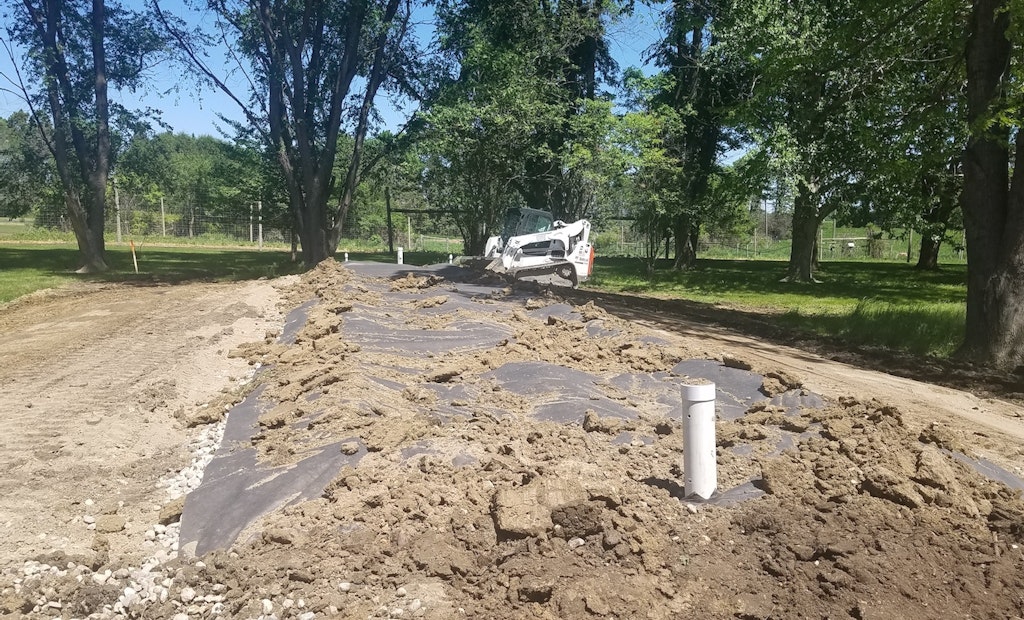Interested in Systems/ATUs?
Get Systems/ATUs articles, news and videos right in your inbox! Sign up now.
Systems/ATUs + Get AlertsIn the days of COVID-19 restrictions, many of us are in need of a haircut. Barbers and beauty salons that are smaller in scale seem to be getting more common. Even before the changes caused by the pandemic, many people considered running a smaller operation out of their home.
If the home is on a septic system, there are valid concerns as to the impact on the septic system if it was not designed to handle this waste stream. The biggest concerns are increased flow and loading. If the beauty salon is at a residence, a separate system is recommended due to the risk of the beauty salon waste and to protect the other soil treatment system, but in some instances — with caution — it may be allowed to enter the existing septic system.
Beauty salon waste is not specifically covered in most septic regulations. Septic system sizing is typically based on bedrooms and research of typical flows and wastewater characteristics from domestic residences. If domestic waste is being combined with the process water from the beauty salon, all the requirements of the septic system rules apply, along with any other applicable regulations.
A septic system receiving beauty salon waste is considered by the Environmental Protection Agency to be a Class V system. No rules from the EPA specifically deal with beauty facilities whose wastewater goes into a septic system, although it does require that a Class V inventory form be completed and mailed to appropriate agencies. Local ordinances administered by counties, cities and townships may have provisions regarding these facilities and must be consulted.
The typical chemicals used in a beauty salon may create a challenging environment for the necessary bacteria in a septic tank and soil treatment system. The addition of these chemicals may result in septic tank effluent that does not meet the definition of domestic wastewater. If this wastewater is applied to a soil treatment system, the life of the system will likely be reduced. The other challenge is fine hair particles being washed down the drain. Smaller particles may travel through septic tanks and filters and run the risk of plugging up the soil. The load of surfactants is also high in this type of waste, which over time can add to the scum layer in the septic tank and potentially clog up the soil.
Option 1: All wastewater is placed in a holding tank and either land-applied or taken to a wastewater treatment plant.
Option 2: Use a soil treatment system in combination with a holding tank to treat the wastewater. Be sure to consult about any technology to be used to determine if it can handle the additional loading.
Recommendations
- Get a handle on the flow - For existing facilities, a flowmeter should be installed to track water use. Flow data should be collected at representative times (trying to target busy days) and over several months, with 90 days recommended. If no facility exists or an expansion is planned, estimates should be made that include a safety factor (1.5 times the highest weekly average). A flowmeter or other device to measure flow should be installed to verify estimates.
- Get a handle on the waste
- It is critical that no hazardous waste enter any onsite septic system, as they are not designed to treat such waste.
- Chemicals, including peroxide and any antibacterial soap, that enter the system should be limited. Onsite septic systems can deal with a small amount of chemicals, but if the amount is above typical domestic usage, the performance of the system may be impacted. Unused chemicals should not be disposed of in the system.
- A separate sink should be used for the rinsing of treatments (coloring, perming, etc.) with high levels of chemicals that is hooked up to a holding tank is advisable if the business will be performing significant amounts of these treatments.
- All solid material should be dealt with as a solid waste. Fine screens or filters should be put on all floor and sink drains to catch small particles and hair.
- Design for the loading
- The septic tank size should be doubled compared to the minimum in typical septic system regulations.
- If advanced pretreatment will be utilized, consult with the product manufacturer to determine appropriate application and sizing.
- A commercial-size effluent filter (designed for high-strength waste) should be placed on the outlet of the last septic tank. A manhole should be located over this filter, as there is high potential for maintenance to be needed at this location.
- Monitor and manage - A maintenance contract should be in place with a licensed onsite professional to ensure the proper operation and maintenance of the treatment system.
A home beauty salon or barbershop requires a hard look at its wastewater, design and management to ensure long-term septic system performance.
About the author
Sara Heger, Ph.D., is an engineer, researcher and instructor in the Onsite Sewage Treatment Program in the Water Resources Center at the University of Minnesota. She presents at many local and national training events regarding the design, installation and management of septic systems and related research. Heger is the President-Elect of the National Onsite Wastewater Recycling Association and she serves on the NSF International Committee on Wastewater Treatment Systems. Ask Heger questions about septic system design, installation, maintenance and operation by sending an email to kim.peterson@colepublishing.com.






